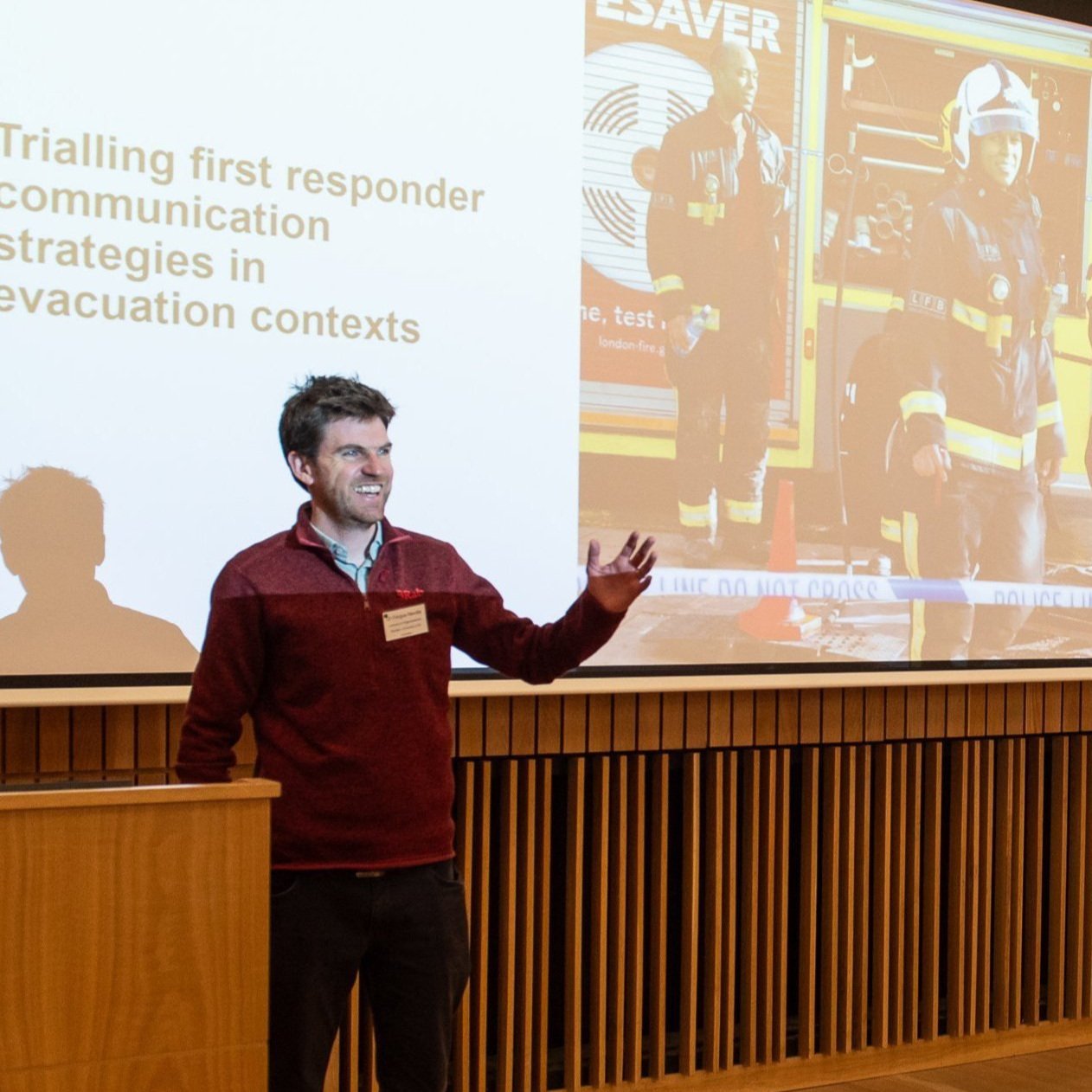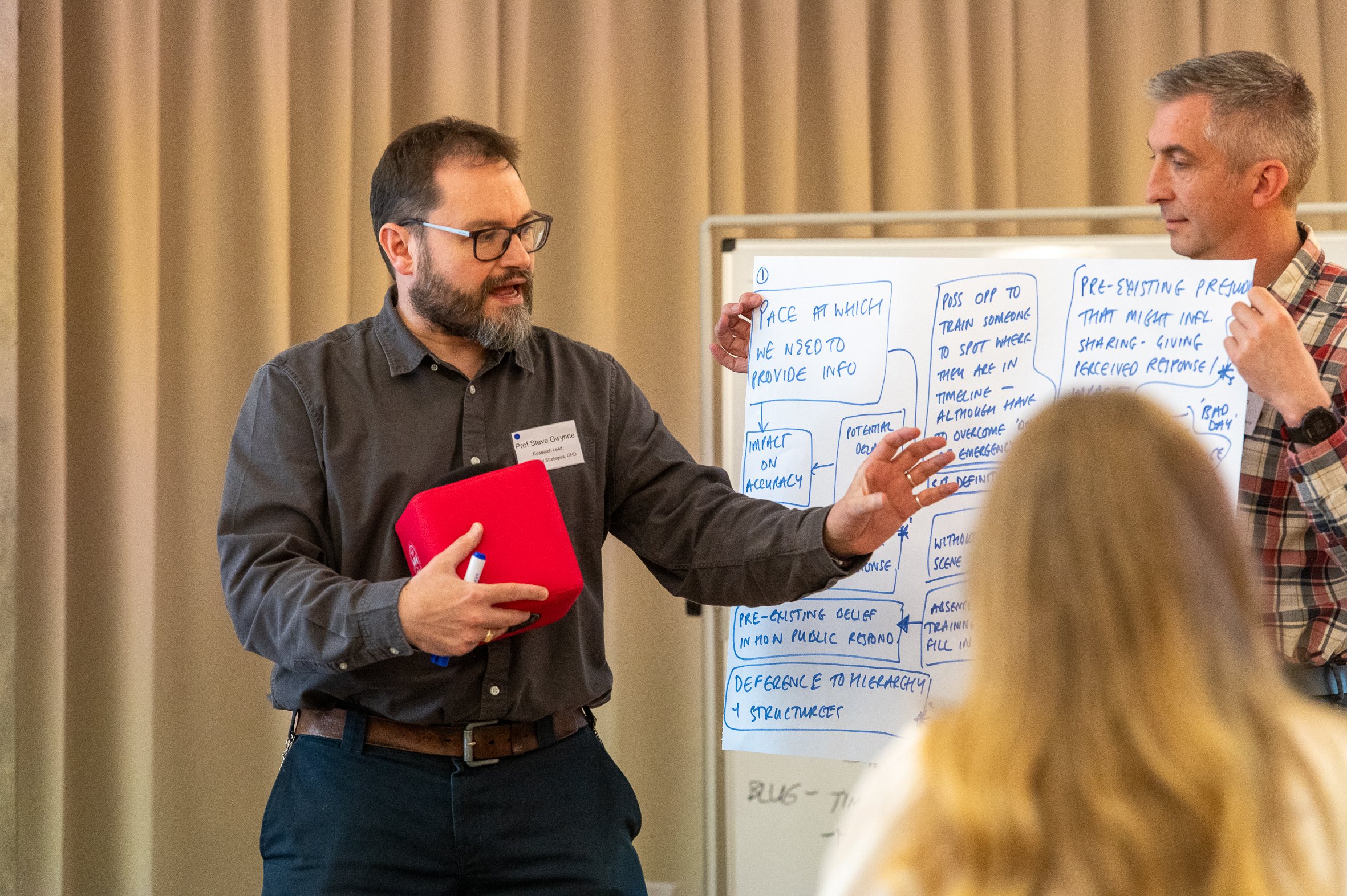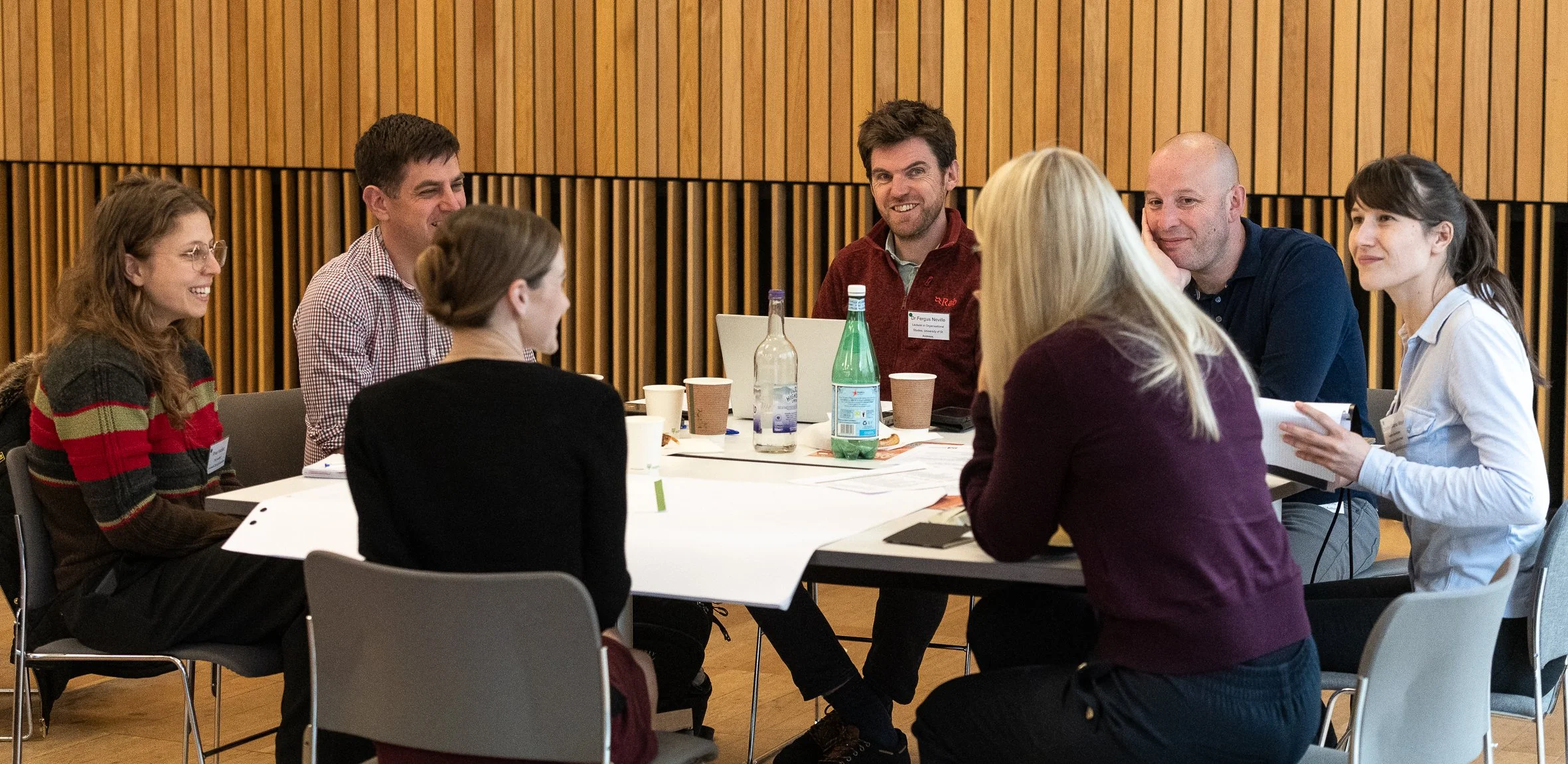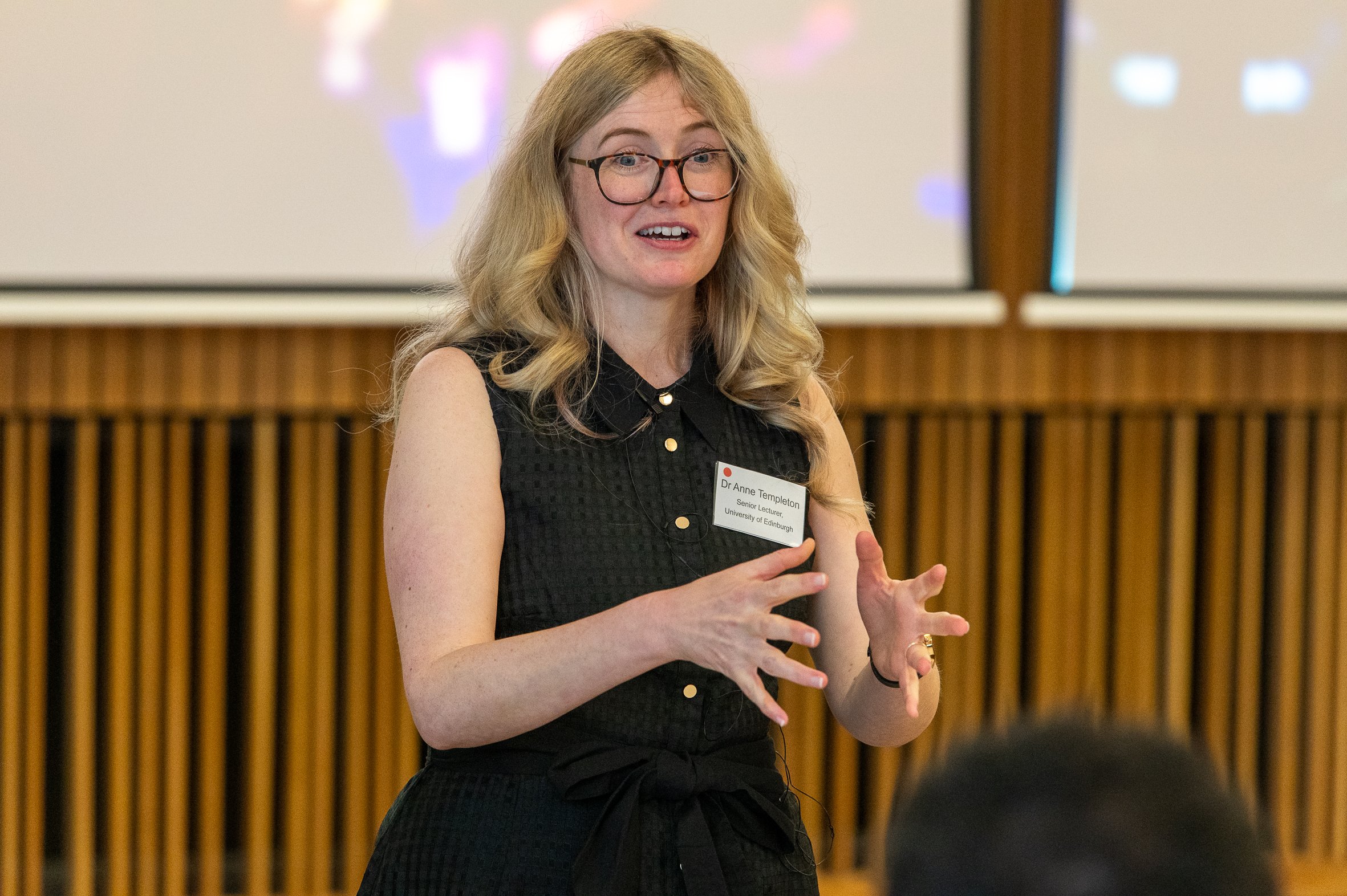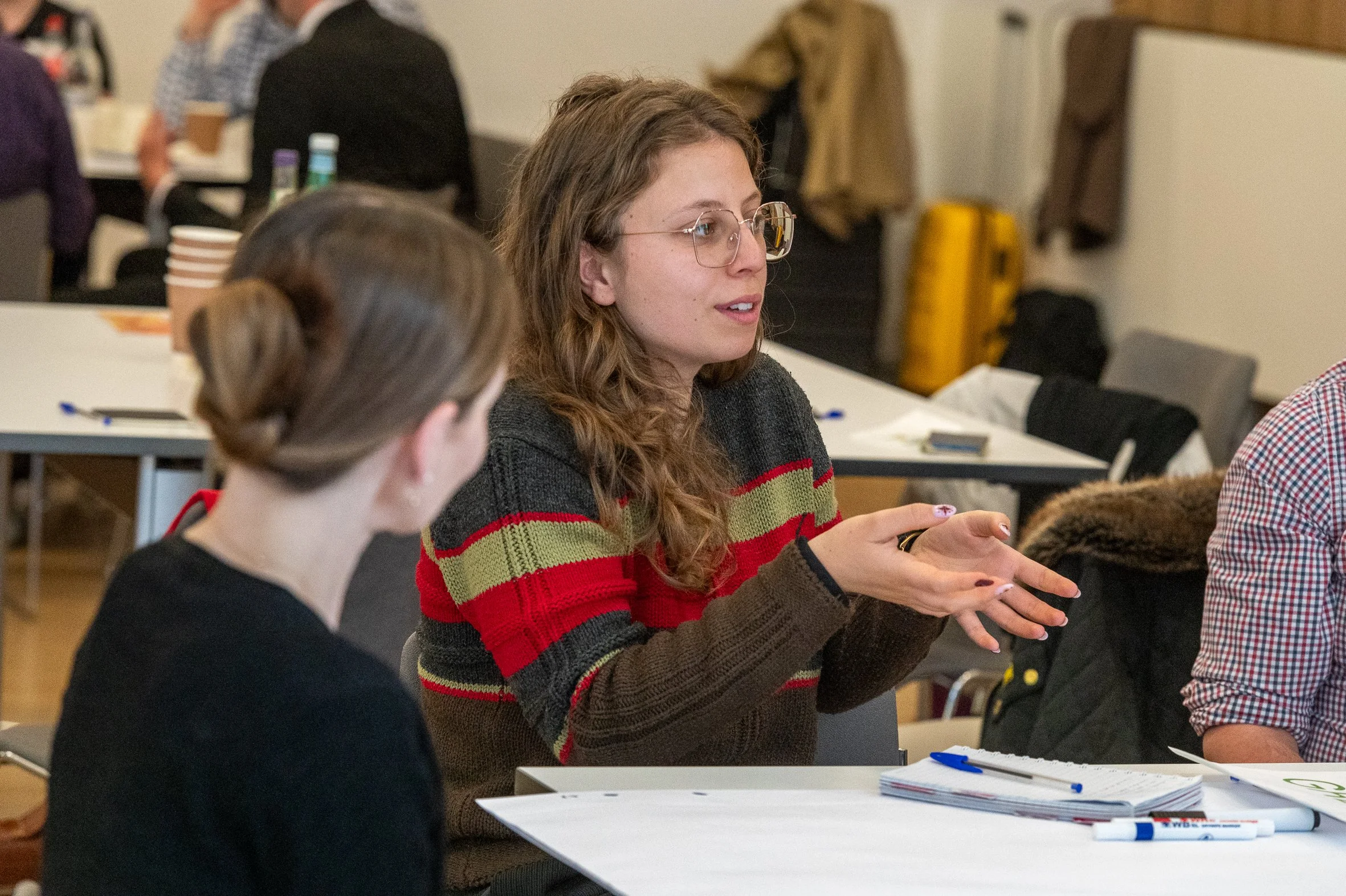First Responder Communication Strategies
Interim Workshop
Overview
On 11th and 12th June, we held an interim workshop that brought together 47 leading stakeholders from first responder organisations, government, academia and industry to share knowledge and identify routes towards improving safe emergency response. We had 3 key aims:
Address how the instructions given by first responders to the public in emergencies influence public response, and how these findings can be used to improve safety in emergencies
Agree priority routes for future research and cross-sector collaboration in emergency management
Identify routes to translating research findings into impactful change
The workshop was invigorating and productive. Together, we evaluated the project results and identified several avenues for impact and future work. Workshop feedback showed attendees found the content either informative or extremely informative, substantially changed their thinking regarding approaches to communicating in emergencies, and that the work presented would strongly inform their future work. A summary of the activities for each day is provided below.
Day 1
June 11 2024
-
First up, Dr Anne Templeton introduced the research project and shared the findings from our review of current first responder policy, guidance, and training. The slides can be found here. Take home messages are that the current policy, guidance and training covers:
What information to convey (e.g., what is known about the emergency, not known, and uncertain, what the public should do and why)
How to convey the information (e.g., be specific, clear, consistent, ensure information comes from a credible source, be verifiable, and delivered confidently)
To actively listen to others, verify information communicated, and be assertive (but not overly assertive to avoid backlash)
Although the current documentation is valuable, it begs the following open questions:
What could be considered ‘too assertive’?
Who are the trusted messengers in emergencies? How might the trusted sources differ across sections of the population?
How can first responders establish trust and credibility in sudden onset emergencies?
What support is there for first responders to create arrangements for effective communication with the public?
-
Next up, Anne shared findings from 18 interviews with firefighters and ambulance service personnel in Scotland and England (the slides can be found here). She showed how first responders can view the public as both helpful and a risk (usually from trying to be helpful) and how responders feel a need to control the situation due to a perceived duty of care. Notably, the interviewees expressed that public trust in fire and ambulance services is typically high which helps them be listened to in emergencies. When discussing their preferred communication tactics, they consistently expressed a preference for openly communicating with the public in a way that reassures and encourages certain behaviours. Importantly, they expressed 3 different styles of phrasing when giving examples of how they give instructions to the public:
A directive approach, i.e., being abrupt. An example of this is using “you must” phrasing. They try to avoid this approach to maintain positive relationships with the public
Using an interpersonal approach, i.e., asking the public for a personal favour, often accompanied by giving the person a task to help manage their well-being. An example of this is using phrases such as “can do you that for me?”
Framing the response in a collaborative way, i.e., conveying actions as a joint task to help the public feel a sense of agency. An example of this is using phrases such as “let’s have a talk about what we’re going to do here”
Regarding current training about communicating with the public, the interviewees said that training tended to be at a local level rather than national, was through professional development training (primarily aimed at media training) or happened informally through shadowing of senior colleagues. Their requests for the project were gaining evidence-based information and guidance about what words cause specific reactions, how to quickly get correct responses from the public, and enhancing learning from one another.
-
Next up, Sayaka Hinata presented her PhD research where she interviewed 6 first responders about their concerns around sharing information with the public. Sayaka’s presentation slides can be found here. Key findings were:
Responders perceived a need to provide an appropriate level of information to maintain public calm and felt pressure to get accurate and timely information to the public. This was due to concern that the public could share inaccurate information with others or overreact
Responders would limit information to maintain public safety, e.g., being required to protect confidential information. This was due to concerns about the public (inadvertently) sharing confidential information or sharing information on social media
-
In small groups, we put our heads together and discussed the key barriers that exist when first responders and government bodies communicate with the public in emergency situations. The identified barriers were:
Getting the public to understand risk level
Communication styles need to be nuanced when talking to the public
Needing a communications strategy for every incident
Handling relations between zero responders, professional first responders and the public
Dealing with risks of misinformation and information sharing, e.g., needing to fill information gaps, knowing the amount of information to safely share with the public, confidentiality, having a lack of time and practical resources to communicate with the public, and navigating information spread on social media
Dealing with unknown and/or incomplete information
Needing improved/restored public confidence in responder organisations and building this pre-emergency
Including crowd psychology in training as standard
Needing to understand physical barriers, environmental barriers and crowd dynamics
Concerns about liability if information is shared
Keeping on top of new technology
Most UKSP guidance is instructions-based rather than principle-based
Guidance focuses on "outcome of delivery" rather than "how do we get there"
Most public-facing communication is too vague, e.g., "for information" rather than providing specific actions
Both responders and the public hold pre-existing assumptions about the other
Communicating to dense crowds (bi-directional communication)
-
Next, we discussed what information or areas of training should be included in documentation regarding communicating with the public. Agreed areas included:
Need scripts which illustrate the types of things to say in different scenarios (it is difficult to have a “one size fits all” approach for emergencies)
Need a toolkit of principles to consider in emergency management
A focus on culture including pre-existing beliefs, personalities and behaviours
The need for more openness when sharing information (but this must be balanced with confidentiality considerations)
Creating standard training for all personnel who talk to the public to increase awareness of good practice and the impact of communications
-
Dr Yunhe Tong presented a systematic review which identified aspects of evacuation messaging explored in the evacuation experiment literature (the slides can be found here). Yunhe showed that ‘how to inform’ was the most prominent area researched in the literature. This category referred to the characteristics of evacuation messages and the approach used for their delivery, including the message format, wording, voice properties, alarm properties, message source, message channel, message tone, and message content.
To a much lesser extent, the literature also explored ‘when to inform’ i.e., the timing at which evacuation messages should be delivered, and ‘whom to inform’, i.e., the identification of appropriate individuals of groups to be informed.
Yunhe made a compelling case that, going forward, further research is needed into how wording and message content impact public response.
-
Dr Fergus Neville shared results from our experiments trialing evacuation phrasing (the presentation slides can be found here). These studies aimed to test the effects of phrasing used by responders when giving evacuation instructions on how much the participants felt part of a group with the responder giving instructions (i.e., had a shared social identity with the responder), how fairly they felt treated by the responder, their trust in the responder, and how willing there were to adhere to the responder’s instructions.
In Study 1, we recruited 340 UK participants to take part in a study supposedly about health and safety training in the workplace. In actuality, they were shown images of the building for the training and told that they saw a fire engine and firefighters outside. They were then given instructions by a firefighter with either directive, interpersonal or collaborative phrasing based on the findings from our interviews (session 2 described above). The instructions were also given in either an abrupt or neutral tone. Fergus showed the following key results:
Participants had a higher shared social identity with firefighters when the collaborative phrasing was used (e.g., “we need you to work together with us and evacuate”) compared to when the phrasing was interpersonal (e.g., “I need you to evacuate”) or directive (e.g., “you must evacuate”)
Participants felt more fairly treated when the instructions were delivered in a neutral tone compared to an abrupt tone
Having a shared social identity with the firefighter was positively associated with feeling fairly treated, trust and intended adherence to the instructions
In Study 2, the same scenario and phrasing of evacuation instructions were given to 272 participants. However, this time the instructions were given as either being from a firefighter, a person in a high visibility jacket, or another person in the building. The results showed:
Shared social identity was again highest when the collaborative phrasing was used, compared to the interpersonal and directive phrasing
The perception that the instruction provider was acting in the interest of the public was highest when the collaborative phrasing was used, compared to the interpersonal and directive phrasing
Trust was highest for firefighters, followed by the person in the high visibility vest, and then the other person in the building. This pattern was the same across the collaborative, interpersonal and directive phrasing conditions
Participants felt treated most fairly by the firefighters
Participants were most willing to follow instructions when given by a firefighter, but overall intended adherence was very high
Again, having a shared social identity with the firefighter was positively associated with feeling fairly treated, trust and intention to adhere to the instructions
Finally, Yunhe shared the plan for our virtual reality evacuation experiment where participants are placed in a virtual hotel room, a fire alarm sounds, and they are told to stay where they are and await further instructions (the slides can be found here). The instructions are given using either collaborative, interpersonal or directive phrasing. We will collect behavioural data such as how long people stay in the room. We have since collected the data so watch this space!
-
In this session, we co-identified which stakeholders should know about the research, the current practice, policy or guidance that can be changed regarding communicating with the public. The agreed stakeholders were:
Developers of communication training
National Inter-agency Liaison Officer
Policy makers in emergency planning and response
Frontline responders
Media to help manage expectations and understand their role in public safety
Secondary impact: the principles can feed into event/hospitality/ sports/control rooms
Research communities, e.g., College of Experts
National Response Team
National Fire Chiefs Council via the Academic Collaboration, Evaluation and Research group
Communications networks in the Home Office
Agreed key documentation to be updated was:
Approved Document B
Existing alert systems including alarm design
Civil Contingencies Act
-
We wrapped up Day 1 by looking ahead to the priority areas to be explored in the future of the project. The aim was to agree which pressing issues we see facing emergency planning and response over the next 10 years. The areas agreed were:
Why do people not comply? Who will they comply with? Do we have a choice of who communicates? What do social norms contribute?
What is the generalisability of the findings across emergencies and different populations and vulnerable and/or isolated groups?
The need to include a case study that allows triangulation of the information given to the public, behavioural data on the public’s response, and the public’s views on their reasons for the response
Increased focus on perceived threat
Including the collaborative tone of messages in different contexts and training staff to use it
Including additional measures of non-compliance and why it happens, and catering this to different types of emergencies
Exploring the importance of message length
Explore findings for other types of responders, e.g., volunteer organisations
How we can upstream these findings to improving community resilience
Day 2
June 12 2024
-
To kick off day 2, Dr Anne Templeton presented the key findings from the group’s systematic review into how current agent-based models simulate social behaviour and communication in evacuations (the presentation slides can be found here and the published paper can be accessed here). A key recommendation was that modellers should explore how many of the variables measured in the modelling literature (e.g., flow, density, risk awareness) are influenced by communication between agents and group bonds.
-
Next up, Dr Christina Mayr gave an expert overview of Vadere, the open-source framework for pedestrian and crowd dynamics. The slides can be found here.
Christina showed the extensive work that has already gone into creating the ‘psychological layer’ in Vadere to model psychological behaviour (e.g., salient social identities) and gave insights into how simulations can help us to learn how behaviour affects crowd locomotion such as density, velocity and evacuation times. The publication list from the Vadere team can be accessed here.
-
After a short break for tea and coffee, Dr Yunhe Tong presented the model development in Vadere to date (the slides can be found here). Yunhe showed how we have modelled the effects a firefighter’s communication when using collaborative, interpersonal or directive phrasing as well as perceived risk on each agent’s level of shared social identities with the responder, and therefore their adherence to the responder’s evacuation instructions. Finally, he showed the plans to implement this model in large commercialised softwares, PathFinder and Massmotion.
-
We discussed the potential audiences who could benefit from our modelling development and how to reach them. Highlight audiences included:
Modelling communities who model route choices for route recommendation, and computer/robotics modellers
Funding bodies from Government, including cross-government working groups
Companies that incorporate evidence-based research, e.g., Arup and Thunderhead Engineering
Other end users in emergency services and crowd managers
Academic modelling groups such as SimSoc and the European Social Simulation Association
The identified outreach plans included:
Showing our novelty to the psychology and modelling communities,
highlighting that our research starts with experiments and encouraging them to apply our framework to their research
Demonstrating the model’s academic and practical applications, e.g., to show how our model can benefit simulations for planning and responding to emergencies and encouraging customers to use it
Providing a 2-page summary of policy implications for end-users
Developing client-use cases for commercial modellers
Engaging practitioners by improving visualisation of the tools, showing videos, etc.
Creating a simple single-page leaflet or slide for training
Creating a handbook for developers to implement the model into their own software
-
To wrap up the workshop, we held a session dedicated to generating ideas for future model development. The aim was to focus on future challenges and pressing issues around modelling behaviour in emergencies and what expertise our project can contribute in the long-term. We agreed on the following areas:
Including other types of agents, particularly those with mobility impairments
Increasing realism by creating scenarios where some agents have not received the safety instructions or receive them later in the scenario
Including multiple sources of information, e.g., guidance from other agents who are members of the public, signage, seeing agents take other routes
Including more adherence behaviours, e.g., pre-evacuation time, time spent in specific areas, tracking routes taken
Exploring the effects of different levels of shared social identities on behaviours
-
The workshop encapsulated the energy and enthusiasm that exists for improving safety in emergencies, and was an excellent example of the cross-sector benefits that can come from having people together in a room with dedicated time to discuss shared challenges and priority areas for improvement. Thank you to all the attendees for generously contributed their valuable expertise, wisdom, and ideas. We look forward to seeing you again at the next workshop!


